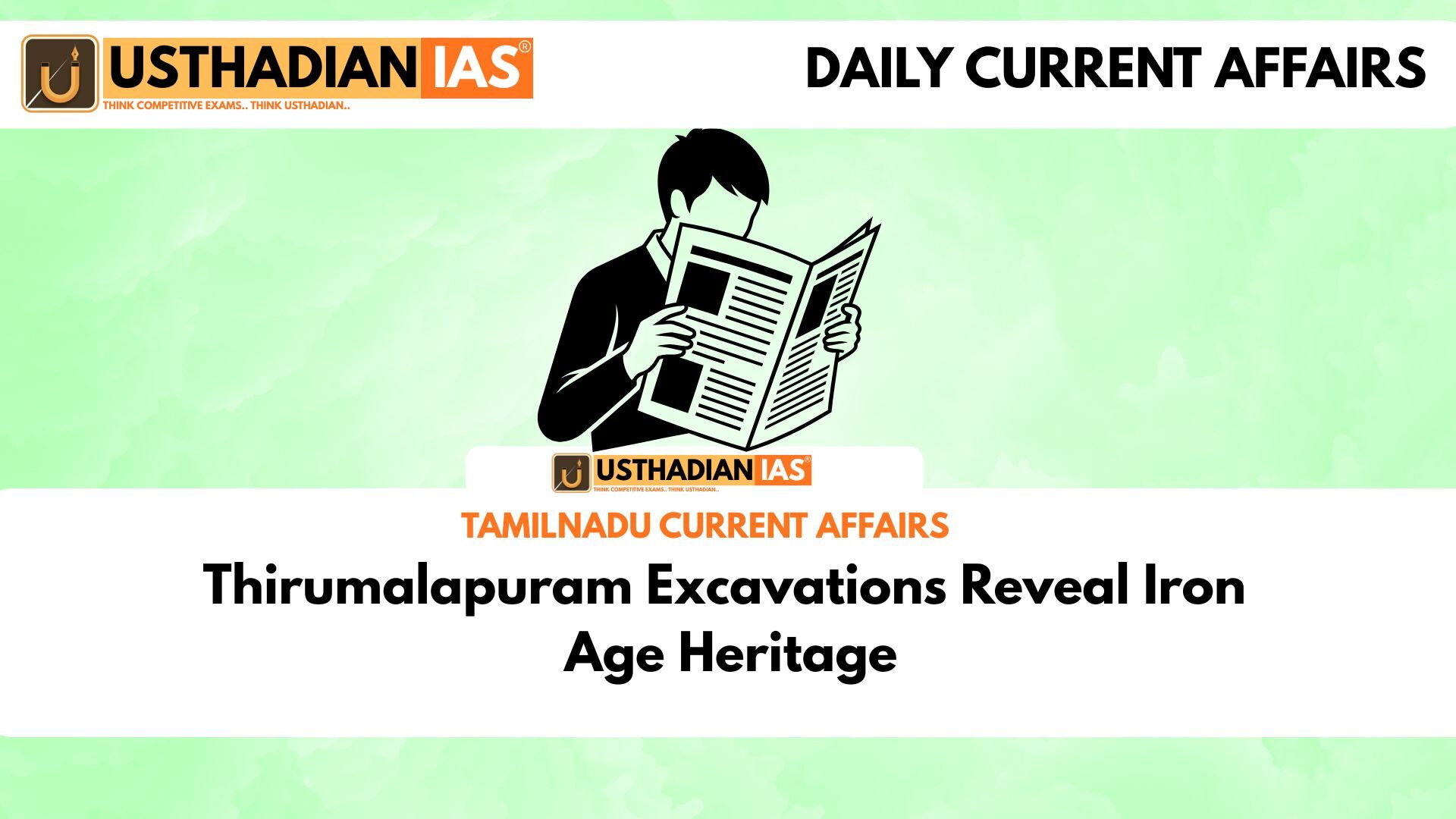Excavation Overview
Thirumalapuram Excavations Reveal Iron Age Heritage: The Tamil Nadu State Department of Archaeology (TNSDA) conducted the first season of excavations at Thirumalapuram in the Tenkasi district. The site is located about 10 kilometres northwest of the present-day village. The burial ground spans nearly 35 acres between two seasonal streams near the Kulasegarapereri tank.
Static GK fact: Tenkasi district was carved out of Tirunelveli district in 2019 and is known for its rich cultural heritage.
Chronology and Cultural Context
Preliminary studies date the site to the early to mid-third millennium BCE, placing it within the Iron Age. Archaeologists have drawn comparisons with other prominent Iron Age sites such as Adichanallur and Sivagalai, indicating shared cultural traits.
Trenches and Structural Discoveries
A total of 37 trenches were dug during the first excavation season. Excavators discovered a unique rectangular stone slab chamber designed for urn burials. The chamber consisted of 35 stone slabs and was filled with cobblestones up to 1.5 metres.
Static GK fact: Adichanallur, located in Tamil Nadu’s Thoothukudi district, is one of the most significant Iron Age burial sites in South India.
Ceramic and Symbolic Artefacts
Various ceramic types were uncovered, including black-and-red ware, red ware, red-slipped ware, and black-polished ware. Some vessels featured white-painted designs similar to artefacts found at T. Kallupatti and Adichanallur. Symbols engraved on urns depicted humans, mountains, deer, and tortoises, highlighting ritualistic and symbolic practices of the period.
Material Artefacts
Excavators found a total of 78 antiquities made of bone, gold, bronze, and iron. Key items include tweezers, swords, spearheads, gold rings, axes, daggers, chisels, boneheads, and arrowheads. Notably, three tiny gold rings were discovered inside an urn at a depth of 0.49 metres. Each measured 4.8 millimetres in diameter and weighed less than one milligram, indicating advanced craftsmanship.
Static GK fact: Urn burials are characteristic of Iron Age societies in South India, reflecting complex mortuary practices.
Cultural Significance
Preliminary findings confirm that Thirumalapuram exhibits Iron Age cultural traits similar to Adichanallur, enriching our understanding of early human settlements near the Western Ghats. The diversity of artefacts and ceramics highlights the technological and artistic sophistication of the era.
Static GK Tip: Western Ghats are a UNESCO World Heritage Site, known for their biodiversity and archaeological significance.
Static Usthadian Current Affairs Table
Thirumalapuram Excavations Reveal Iron Age Heritage:
| Topic | Detail |
| Location | Thirumalapuram, Tenkasi district, Tamil Nadu |
| Excavating Agency | Tamil Nadu State Department of Archaeology |
| Area Covered | 35 acres |
| Chronology | Early to mid-third millennium BCE |
| Trenches | 37 |
| Burial Structure | Rectangular stone slab chamber with urn burials |
| Ceramics | Black-and-red ware, red ware, red-slipped ware, black-polished ware |
| Artefacts | Bone, gold, bronze, iron; tweezers, sword, spearhead, gold rings, axe, dagger, chisel, bonehead, arrowhead |
| Gold Rings | 3 rings, 4.8 mm diameter, <1 mg each |
| Cultural Comparison | Adichanallur and Sivagalai |








